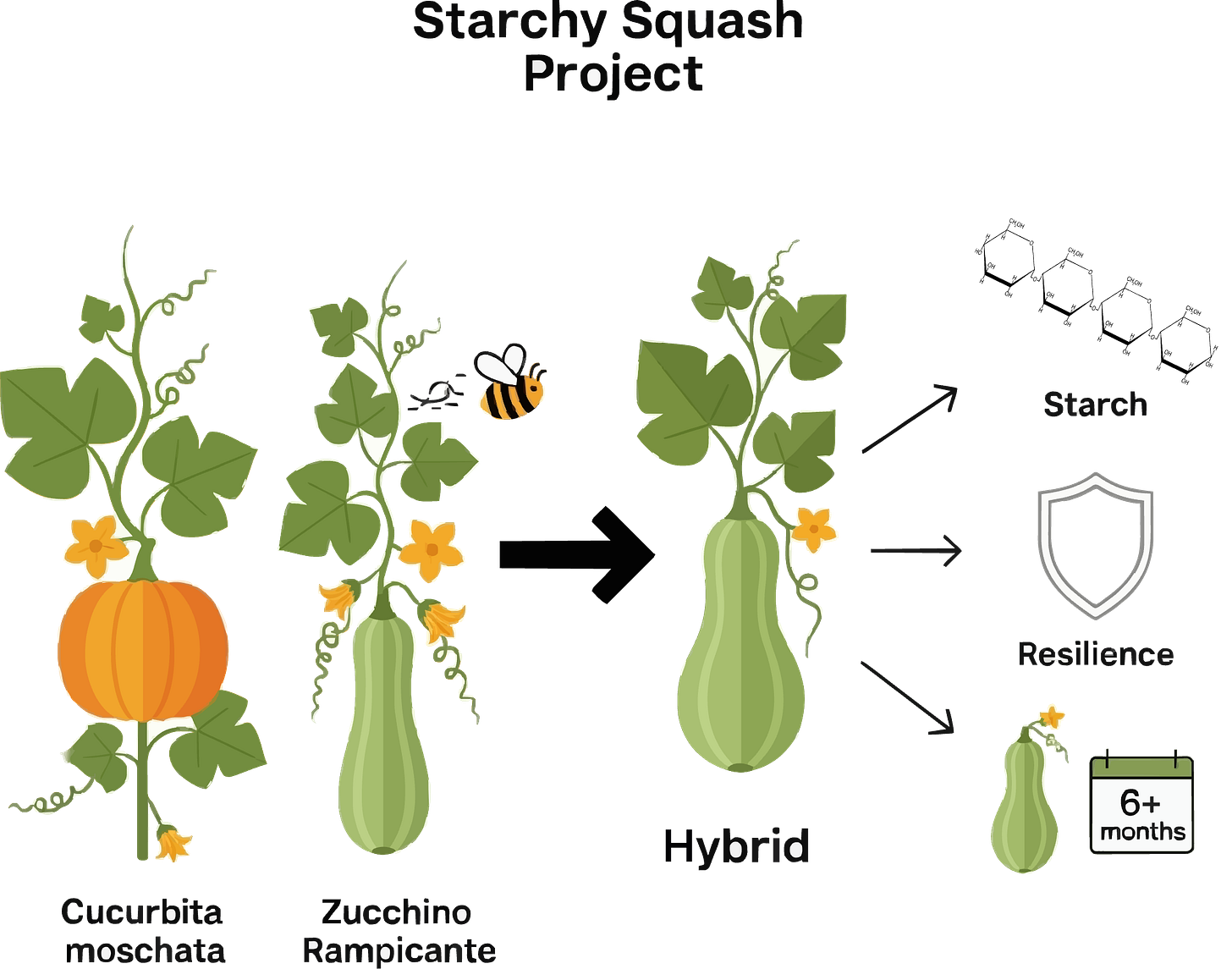Not all of our work at Bactelium happens in a laboratory with fermenters and genetic constructs. Food security is a multi-faceted problem, and some of the most powerful solutions can be found right in the garden. That's the principle behind our Starchy Squash Project, a traditional plant breeding initiative I've been working on for several years.
The goal is to create a new staple crop: a winter squash that is packed with storable starch, highly productive, and incredibly robust.
The Method: The project began with an observation. I noticed that some squash varieties, particularly a Cucurbita moschata I found in my garden, would develop a dense, starchy texture similar to a potato, and they would hold that starch for months in storage. The plan became to breed this starchy trait into the most resilient and productive squash I could find.
I am cross-pollinating different varieties within two common squash species (C. moschata and C. pepo) including tropical pumpkins from Puerto Rico and a prolific Italian summer squash, Zucchino Rampicante to maximize genetic diversity. The plants are grown with minimal water and care to select for only the toughest survivors. If a resulting plant produces fruit that is starchy, robust, and prolific, its seeds are saved for the next generation. If not, it doesn't make the cut.
Where We Are Now: The project has already yielded success. A cross between a starchy moschata parent and the Zucchino Rampicante produced a vigorous, starchy offspring that yielded three large squash with no fertilizer and almost no additional water. Another cross survived a San Diego winter with absolute neglect, proving its robustness. I have successfully harvested a single squash weighing 24 pounds that remained perfectly storable for over six months (and still delicious besides).
What's Next: The work continues. We will keep crossing the most promising offspring to stabilize the starchy, resilience traits. A single one of these plants could eventually produce hundreds of pounds of storable food in a season with very little input. By developing these seeds and sharing them, we can provide a powerful, low-tech tool for individuals and communities to build their own food security from the ground up.
Thank you for joining us on this journey,
Dr. Gregory Willkeen


